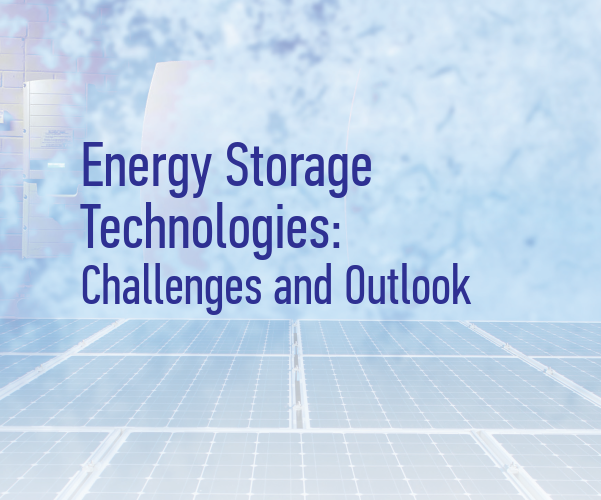The main characteristics, the comparative advantages and disadvantages of the main electricity storage technologies, as well as the opportunities for their financing through the new EU budget are presented in the new technology review by The Green Tank.
The extensive penetration of renewables constitutes a fundamental component of EU energy and climate policy on the road to climate neutrality. However, as the shares of renewables increase, so does the need for energy storage, in order to ensure a balance between supply and demand of electricity. For this reason, storage technologies have acquired a central role in the National Energy and Climate Plan for 2030 as well as in the Long-Term Strategies of Greece for 2050.
The report titled “Energy Storage Technologies: Challenges and Outlook”presents the key characteristics of the main energy storage technologies. Emphasis is placed on the two dominant storage technologies today, namely pump hydro energy storage and batteries, but also on two emerging technologies, namely thermal storage through the conversion of lignite and coal power plants, as well as hydrogen technologies, which are expected to play a more significant role in the future. Finally, an overview of the possibilities for financing energy storage infrastructure from the next EU budget of 2021-2027 is presented.
Pumped hydro energy storage is currently the most dominant storage technology worldwide. Its main advantages are technological maturity, rapid response times and fairly high overall efficiencies. However, it is difficult and time consuming to find a suitable location and construct the two reservoirs required in such systems, while at the same time construction is accompanied by significant environmental impacts, such as disturbance of species habitats – especially aquatic ecosystems, deforestation and large-scale vegetation removal before the reservoirs are filled.
Battery storage systems have very fast responses, shorter installation times and higher efficiency rates than pumped hydro energy storage, and they provide a large variety of energy services. Advances in these technologies and increased demand have led to dramatic cost reductions (87% in the decade 2010-2019) with prospects of further reductions to $61/ KWh by 2030. However, the disadvantages of batteries are their relatively short life span, their sensitivity, safety issues, the finite availability of raw materials for their construction and the environmental impact of their disposal, which require the development of relevant recycling systems.
The great advantage of converting lignite and coal plants into thermal energy storage facilities is the possibility of utilizing retired plants and the extensive associated infrastructure, thus retaining jobs in the coal and lignite industries. In addition, the thermal storage medium (molten salts or volcanic rocks) is typically of low cost and high durability, whereas the installation times are of the order of 18 months. However, the combination of thermal energy storage technologies with coal and lignite plants is new, and, hence, accompanied by various technical challenges. Moreover the overall efficiency of such systems is 40% -45%, significantly lower than that of pumped hydro energy storage and batteries.
Finally, despite the great prospects that green hydrogen has to contribute to the decarbonization of many sectors of the economy, only 1% of the hydrogen produced comes from renewables today, mainly due to the high production costs of “green” hydrogen. In addition, the use of hydrogen in the transportation, buildings and electricity generation sectors is extremely limited today. Hydrogen is mainly used in industry, without, however, significantly reducing the carbon footprint of the corresponding industrial processes, since the hydrogen used in these processes is produced from fossil fuels. In order for hydrogen to play a key role in the decarbonization of the European economy, it is vital to establish long-term policies that will both stimulate demand for multiple applications simultaneously, and provide for research and development, so that “green” hydrogen production is rendered economically competitive.
“The new EU climate target imposes the drastic reduction of the use of all fossil fuels and the increased participation of renewables. For the latter it is necessary to develop energy storage infrastructure utilizing a variety of technologies. This new reality must be translated into significantly enhanced renewables and energy storage targets in Greece’s National Energy and Climate Plan, the revision of which must begin immediately, as must the establishment of an institutional framework for energy storage,” said Nikos Mantzaris, Senior Policy Analyst of the Green Tank policy.
- You can read the complete text of the Green Tank report titled “Energy Storage Technologies: Challenges and Outlook”.
- You can also watch Nikos Mantzaris’ presentation (in Greek) on the emerging technologies of thermal energy storage and hydrogen made at the Renewables & Storage Forum organized by here.



















































































































































































































































































































